Waitangi Day meant a day off, and that meant a fitting adventure had to be found. I fixed on Huriawa peninsula at Karitane, 35km north of Dunedin, a place rich in history both Māori and pakeha and which had been returned to Ngāi Tahu under the 1998 Settlement.
We decided to take the scenic route north from Dunedin, following Mount Cargill Rd over the hill to Waitati, then turning off at Evansdale to take Coast Rd past Seacliff and Brinns Point. This allowed us to stop once again at the lookout we’d visited on our previous adventure, from which we could gaze up the coast over the small settlement of just 360 souls and the long narrow peninsula projecting out into the ocean. Beyond was windblown hill upon which Johnny Jones’s pioneering settlement of Matanaka had been built.

We set off again, following the road down into Karitane, then turned off when directed into Barvas St, discovering a picnic area, playground and toilet block. We emerged into unusual weather – sun and heat interspersed with moments of dark threatening cloud and sporadic rain drops.
Checking out the nearby information panel, I was elated to discover that this site held far more historic goodness than I had realised. I knew the story of the siege of Huriawa from my previous research on its sequel, the massacre at Mapoutahi. However I hadn’t realised that this was also the site of a monument, a cemetery, an early whaling station, and Frederic Truby King’s holiday house.
Our first mission was to head up a small hillock to locate the monument, an appropriately pulpit-shaped stone marker commemorating the first Christian service given in the South Island, by Reverend James Watkin on 17 May 1840.
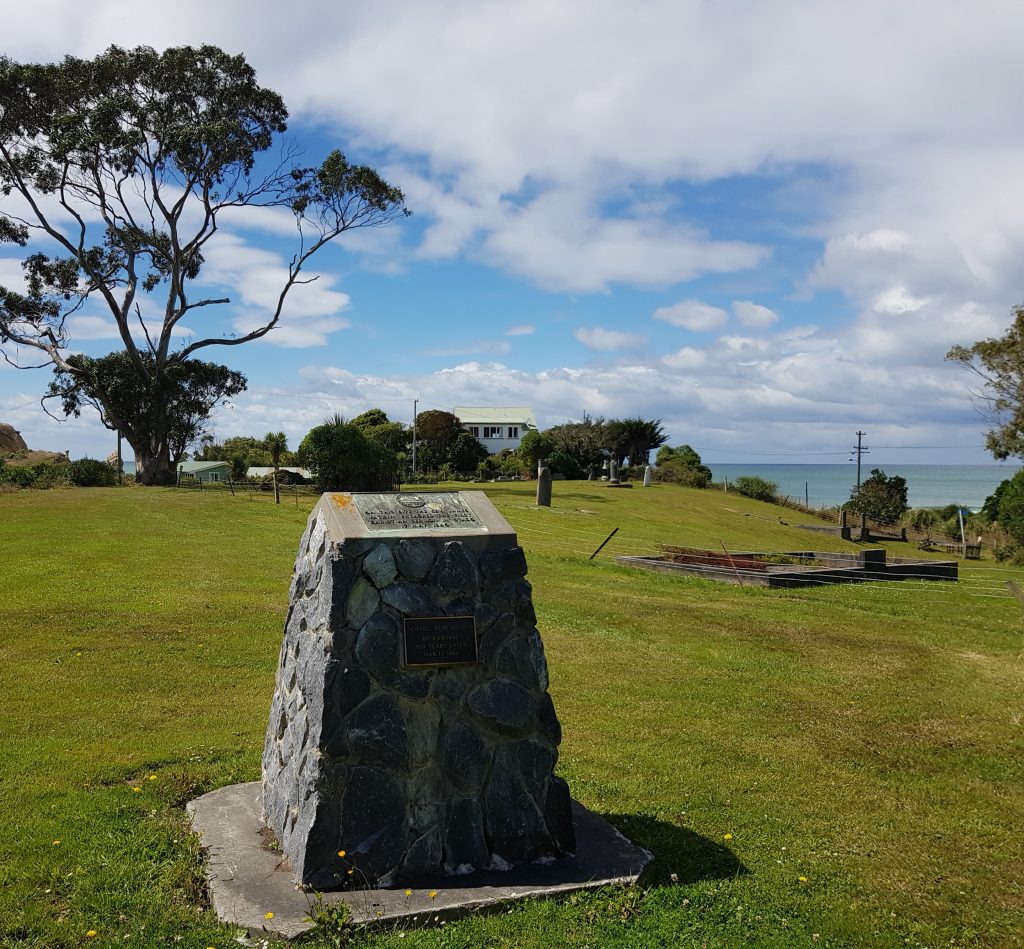
James Watkin arrived fresh from six years in Tonga to a South Island in the throes of massive change. Te Rauparaha’s musket-backed invasions had caused widespread disruptions and a significant decrease to Ngāi Tahu’s population. The Treaty of Waitangi had been signed only three months earlier, and four days after the famous sermon New Zealand would be officially annexed by Great Britain. Johnny Jones’s first boat load of settlers had just arrived at nearby Matanaka – in fact it was Johnny Jones himself who had provided the land for the mission station and the boat that had brought the minister and his family across stormy seas to Karitane.
This state of upheaval may have contributed to local Māori ‘s interest in Christianity, a religion that promised peace and certainty, though it is also worth noting that Māori culture already placed great importance on philosophical thought and that Māori were always very quick to adapt and take advantage of new ideas introduced by the Europeans.
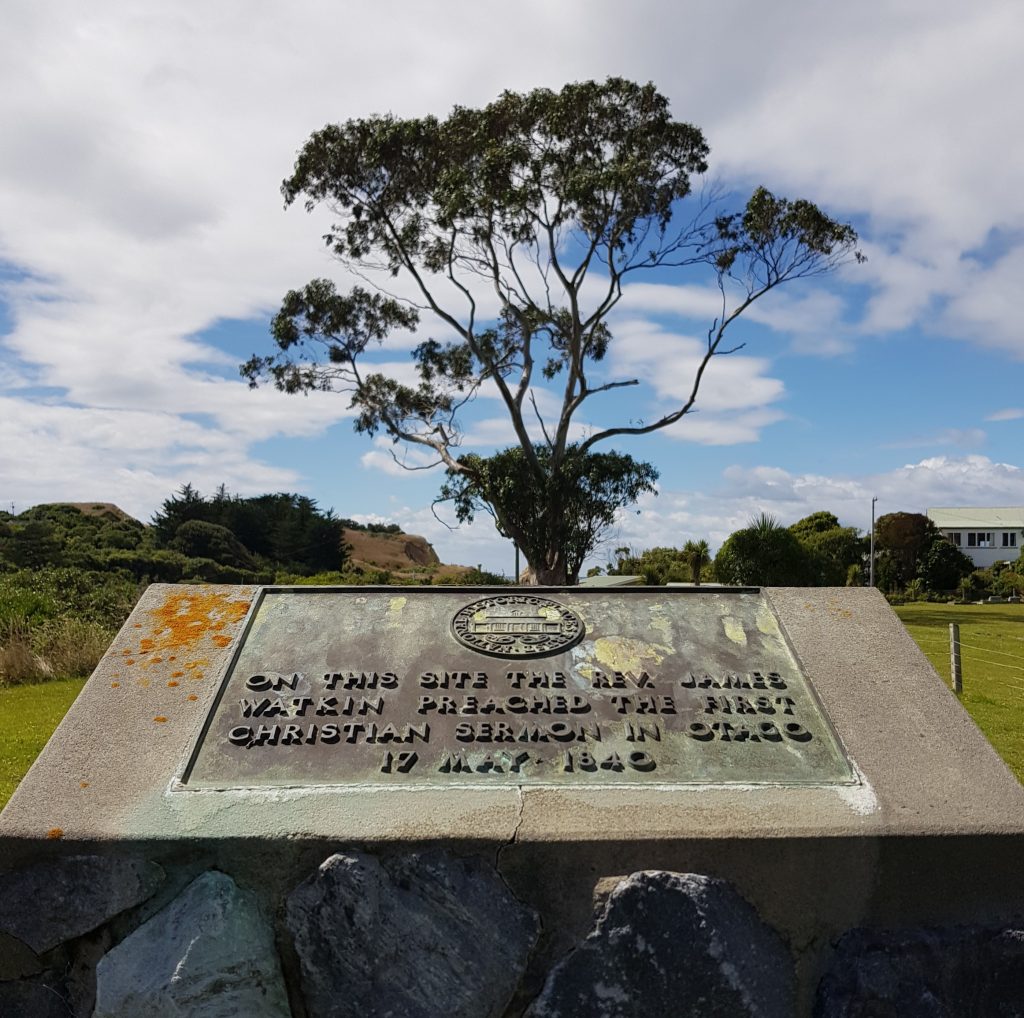
While many Maori came to this first sermon, few would have been able to understand it, as it was given in English. James Watkin immediately set about learning Māori (in particular the South Island dialect), and set up house here at Karitane rather than across the bay with the European settlers, as he considered the conversion of Māori to be his top priority. In the four years he resided at Karitane, he baptised over 258 people and married 39 couples (some of whom had already been married by Māori custom). He had a cohort of community teachers and had converted some influential Māori leaders, some of whom we will meet in just a moment.
Now it was on to the cemetery, and I must say this is one of the most fascinating collections of characters I have ever found in such a place. This grassy knoll represents a tiny snapshot of Otago at the tipping point between Ngāi Tahu sovereignty and British colonisation – hence we have a multicultural crew of Māori, European settlers, and others who came to these shores from all parts of the world to seek their fate.

The first headstone I encountered on this moody outcrop was the Maori-language marker for Kerei Kahuti and Hone Kerei Kahuti, partially obscured by foliage. Kerei Kahuti died in 1880, and is perhaps the same Kahuti who is listed as a signatory to the Otago Purchase and who clashed with Johnny Jones’ whalers on occasion. When the Waikouaiti Native Reserve was divvied up in 1868, Kerei Kahuti received a share.
The purchase of large swathes of the South Island was completed in 1848 in a manner, the Otago Daily Times would later report, “which could not fail to prove satisfactory to…the natives…prosperity and concord would henceforth reign paramount”.
Let’s see how this plays out.
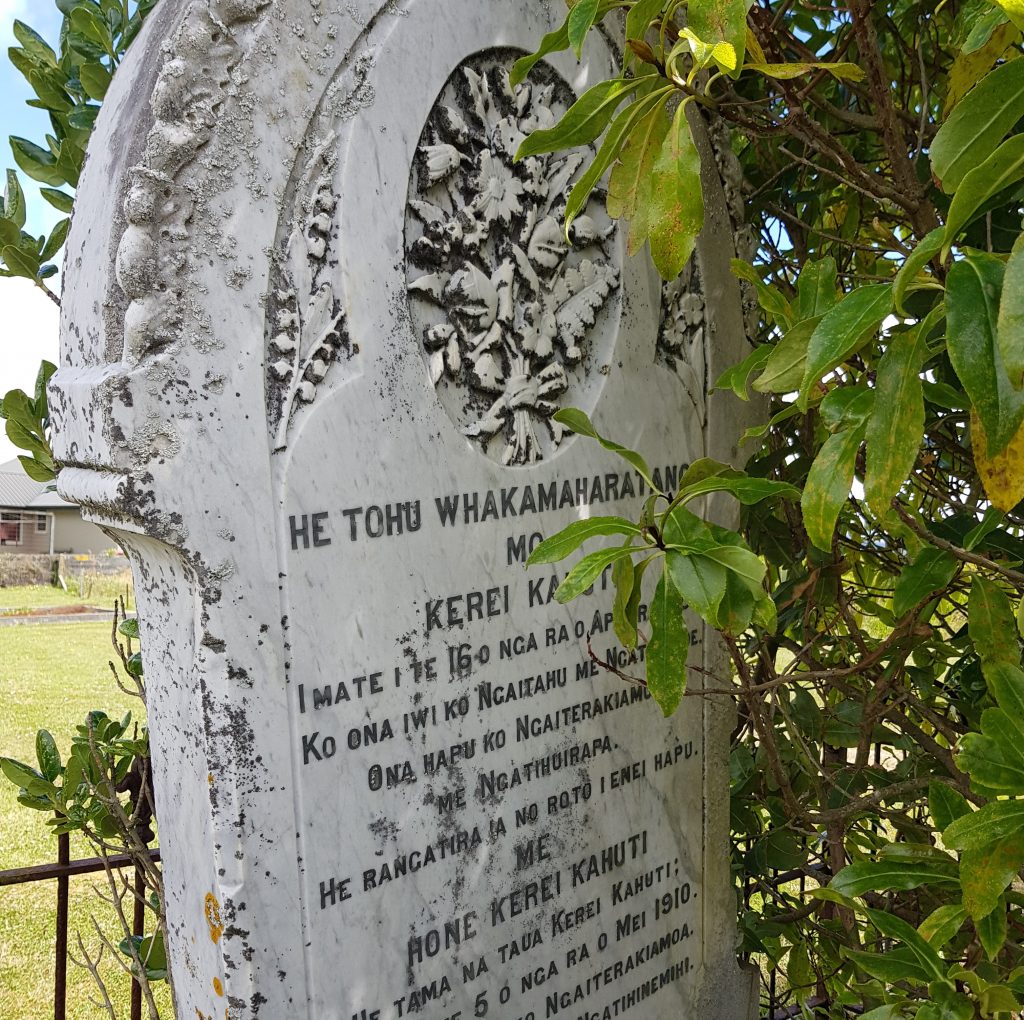
The next headstone was almost too faded to read, and small wonder, because it dates back to 1842. I could only just make out enough text to decipher the name William George Thomas. This is so close to the dawn of New Zealand’s written history that it is difficult to find out much about the man, who was a superintendent of Johnny Jones’s station, but it was burial of his wife Elizabeth that caused enough of a stir to be still recalled.
Elizabeth was also buried in 1842, by Watkin himself, and shortly afterward he also buried a Māori woman named Tautaki nearby. The European population was gravely offended by this insult – giving this departed soul equal status to a white woman’s! Watkin stood firm however, and lectured his congregation on the equality of all under God.
I then discovered the answer to a mystery I had long pondered – the name of Apes Road which runs between here and State Highway 1. Here lie a few members of the Apes family, descendants of William Elisha Apes, a tall and imposing man of Native American descent. He was directly related to William Apess, a well known writer, minister and activist for Native American civil rights, though my sources disagree on whether the famous William Apess was our William’s father or older half-brother.
Our William Elisha (who used one or the other of these first names at different stages of his life) became a whaler, but mutinied in defense of a mis-treated ship’s boy while aboard the Ann Maria in 1839. The result was that he and a companion were dropped off near what is now Port Chalmers a few months before the Treaty of Waitangi was signed. They found their way to the Maori community at Puketeraki, and both the men married Maori women, though his companion fled with his bride as the union was not sanctioned by local rangitira Tuhawaiki.
William Elisha, his wife Mata Punahere, and their children all called Karitane home. Though there’s no headstone, he is said to be buried here, while Mata Punahere and the children are buried at the nearby marae burial ground. These Apes are therefore likely to be more distant descendants of the American whaler.
This connection between two indigenous peoples, the Pequot of Conneticut and the Ngāi Tahu of Puketeraki, is pretty special, and the two have exchanged taonga.
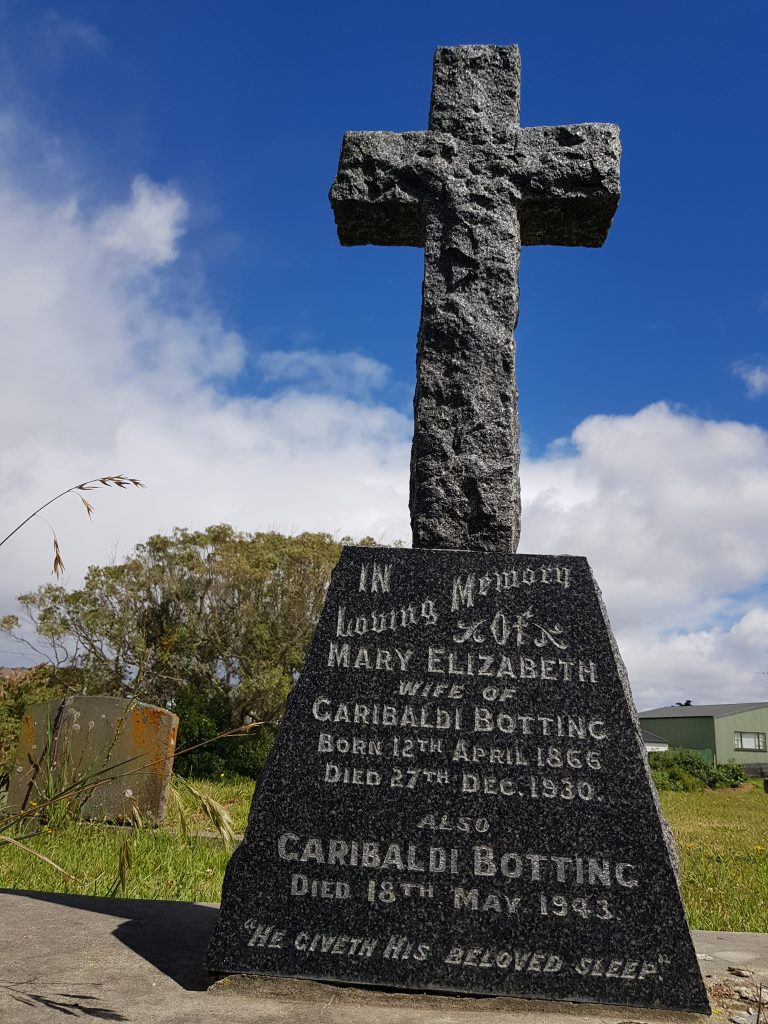
Another intriguing character here is Garibaldi Botting, Australian-born and fourteenth of sixteen children. He doesn’t appear to be at all Italian, so the only explanation I can think of for the name is that in the year of his birth – 1862 – Guiseppe Garibaldi, Italy’s great general, liberator and guy whose statue I saw in Nice, was at the height of his fame. The large family made their living as butchers and prospectors in Naseby, but Garibaldi and wife Mary Elizabeth did a stint in Dunedin for the sake of their children’s education. He later retired to Christchurch which makes me wonder why the couple is buried here – until I saw the headstone next door, of Ada Botting, a well loved nurse who contracted tuberculosis from a patient and died at Karitane aged only 28. Perhaps the grieving parents only wanted to be close to their daughter.
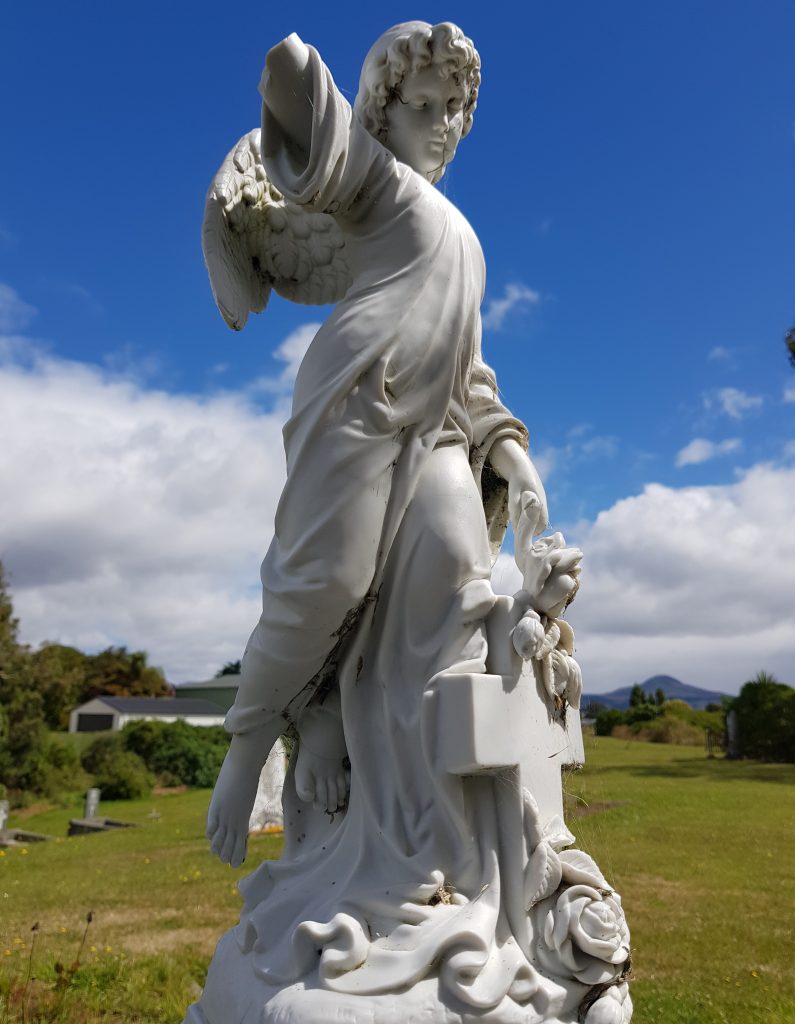
Another “what the heck is he doing here” is Captain William Caesasr Sarsfield Colclough, MBE, who was born in Panmure, curated the Canterbury Museum in Christchurch, and died in Greymouth where he was in charge of the West Coast area of the Canterbury-Westland Military District. He was awarded the Order of the British Empire in 1919 for his services in this regard.
Perhaps his final resting place here is due to the presence of his sister and brother-in-law Mary Louise and George Hannon Wilson. George appears to have been a bit of a local historian, writing to the paper more than once on matters of note.
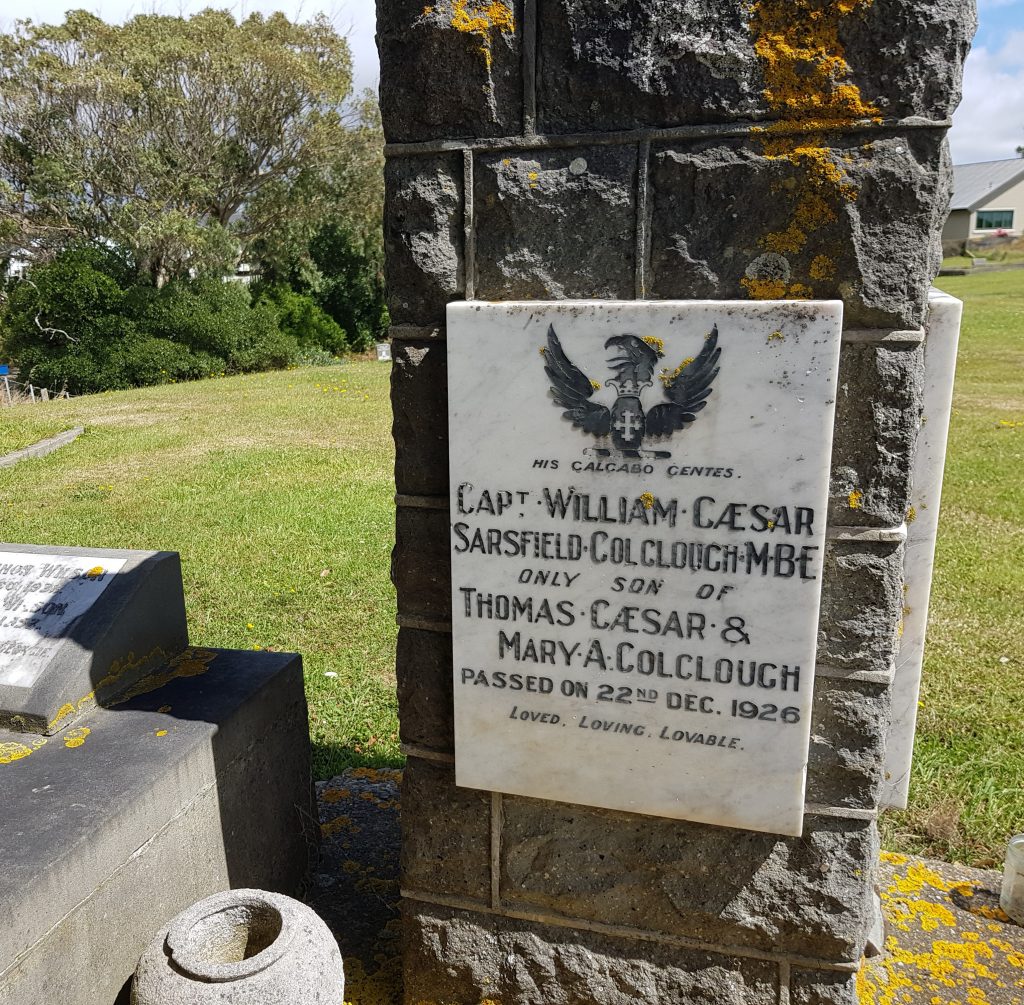
It is their mother, however, mentioned but not buried here, who has caught my attention. Mary Ann Colclough has been described as “one of the earliest, and certainly among the most talented, of feminist leaders in this country”. She wrote under the pseudonym of “Polly Plum” and gave popular lectures on women’s rights.
Now we Rawire te Maire, baptised by Watkin in 1843 and one of his very first rangatira converts. He became a preacher and assisted Watkin and his successor Charles Creed in their missions. One story claims that it was Rawire te Maire who suggested the name Karitane, after Creed (Kariti) the man (tane). However George H Wilson disagreed, saying he’d spoken to Hoani Matiu (also here) who stated the name referred to a ceremony (kari) performed by men (tane).

Now let us return to the purchase of the Otago block, which as I mentioned above was wrapped up so neatly in 1848. The first formal complaint was registered in 1849 by Moeraki rangatira Tiramōrehu, who stated “this is but the start of our complaining to you. We will never cease complaining to the white people who come here after”. The issues at hand were the stingy allocation of native reserves and broken promises regarding the establishment of schools and hospitals.
Tiramōrehu was one of Watkin’s proteges, and the missionary influence has been credited for encouraging peaceful protest rather than the violent clashes that occurred in the North Island. In the same vein they could also be said to have made colonisation “easier” by repressing traditional culture and reducing the mana of rangatira.
There were some unusual outcomes too. Rawiri te Maire joined Te Maiharoa, who was a follower of a religion that synthesised Christian and Maori belief, on a journey into the central South Island to find a place to settle that was not yet claimed by the Europeans.
I am old enough to remember the years of the Treaty settlements, and the frustration of my fellow Europeans at how they “dragged on”, at how this problem was only coming up “just now”. I can only imagine how the Ngāi Tahu felt, having – true to Tiramōrehu’s word – never stopped complaining and continued to resist in various non-violent ways for the next hundred and fifty years. The only reason that it was “coming up now” is that this was the first time our government had truly made a good faith effort to put things right.
As I stand here with those who were present at the dawn of that struggle, in a place that was returned at its end, I can’t help but reflect that this stormy weather somewhat reflects the relations between Māori and pakeha, at times grey and gloomy, other times becoming brighter.
I can only hope the 1998 Settlement was the last bluster, and that the clouds have now cleared to reveal a sun that warms us all.
That is where I will leave us today, upon this grassy outcrop with Otago’s ancestors, but I will be back to pick up the further tale of my Waitangi Day wanderings in another episode.
References:
Karitane Cemetery Dunedin Family History Group Newsletter Issue 103 July 2016
Sowing the Gospel of Peace: Missionary James Watkin at Karitāne and Wellington, 1840-1855 by Mary-Anne Woodfield
Parliamentary Debates, Volume 76 By New Zealand. Parliament
HISTORICAL. Otago Witness, Issue 1642, 12 May 1883
Ethnohistory 60:1 (Winter 2013) DOI 10.1215/00141801-1816166 Copyright 2013 by American Society for Ethnohistory Race and Indigeneity in the Life of Elisha Apes by Nancy Shoemaker, University of Connecticut
Tihema 2014 Kāti Huirapa Rūnaka Panui December 2014 RŪNAKA PĀNUI
A very special occasion at Puketeraki Marae for the Apes whānau
Robert William Botting: Patriarch of a New Zealand Botting Family Compiled by Russell Edward (Russ) Botting, Christchurch, New Zealand
Mount Ida Chronicle FRIDAY, JULY 21, 1916. Mount Ida Chronicle, Volume XLV, Issue XLV, 21 July 1916
PERSONAL MATTERS Evening Post, Volume CXII, Issue 155, 29 December 1926
COLCLOUGH, Mary Ann, “Polly Plum”
EARLY SETTLEMENT IN OTAGO Otago Daily Times, Issue 21671, 15 June 1932
“ KARITANE.” Otago Daily Times, Issue 20880, 21 November 1929


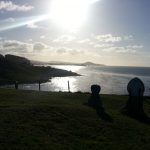
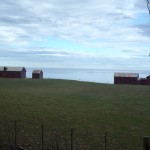
Fascinating research, as always – I will take a printout next time we visit Karitane – thank you! Rawiri Te Maire lived through extraordinary changes. As a boy he fled from Te Puoho’s taua and in old age he was the person who requested that Hikaroroa be renamed Mt Watkin. https://www.geocaching.com/geocache/GC36GN0_watkin-turret-waikouaiti-otago
Hi Jane, thanks for your comment! Rawiri Te Maire was indeed a fascinating character – I have both Te Pueho’s taua and the settlement I mentioned in the article on my list of subjects to visit in future.
Hi, thanks for all the work here. Am already planning a walk to visit all these places, as we have family links here.